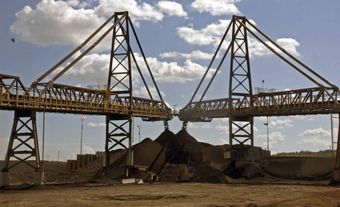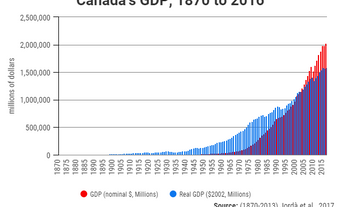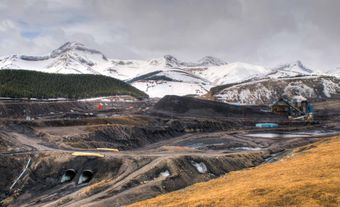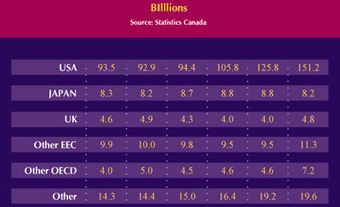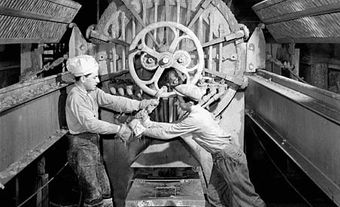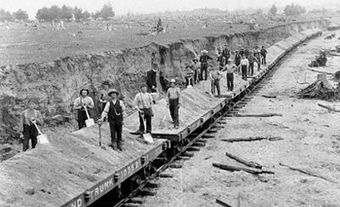A region is a place. Canada has many regions. Regions have different geographic qualities, natural resources, markets and populations. These differences affect the economy of a region. (See also Regionalism.)
This article is a plain-language summary of Regional Economics in Canada. If you are interested in reading about this topic in more depth, please see our full-length entry, Regional Economics in Canada.

Economic Regions in Canada
There are five economic regions in Canada. Atlantic Canada is one region. Quebec and Ontario are two other regions. Northern Canada and Western Canada are the last two regions. (See also Yukon; Northwest Territories; Nunavut; Manitoba; Saskatchewan; Alberta; British Columbia.)
Atlantic Canada
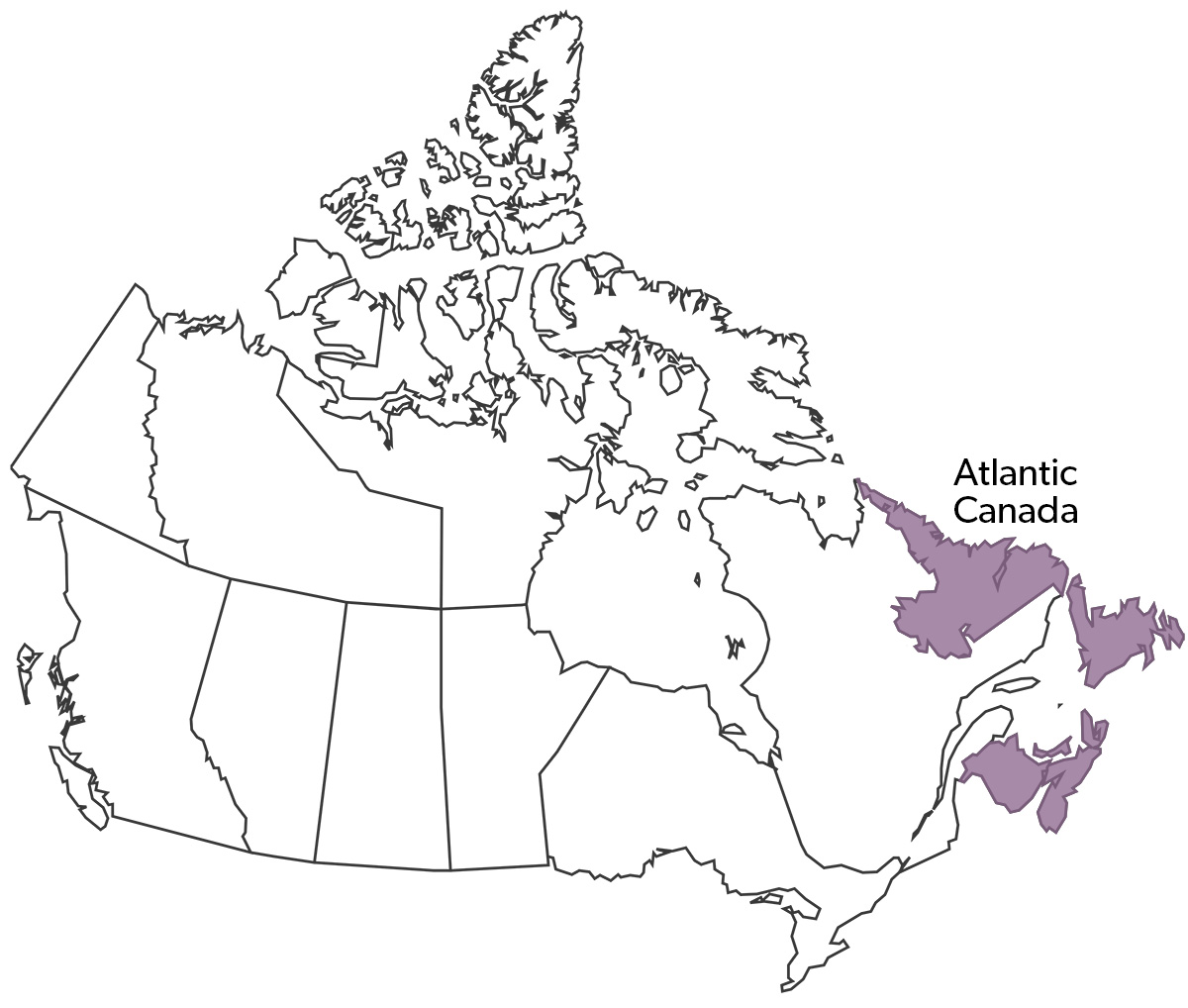
Atlantic Canada is made up of four provinces. They are Nova Scotia, New Brunswick, Newfoundland and Labrador and Prince Edward Island. These provinces have small economies. In 2018, they accounted for 5.5 per cent of Canada’s gross domestic product (GDP). GDP refers to the total value of all goods and services produced within a country. GDP is used to calculate the wealth of a country.
One reason why the Atlantic provinces have small economies is because the cod fishery closed in 1992 (see Cod Moratorium of 1992; Fisheries). Fishing is still an important economic activity in the Atlantic provinces, but many people lost their jobs when the cod fisheries closed (see Unemployment in Canada). Another reason for the small economies of Atlantic provinces is that the population is not growing. One more reason is that the population of Atlantic Canada is getting older (see Aging).
Quebec
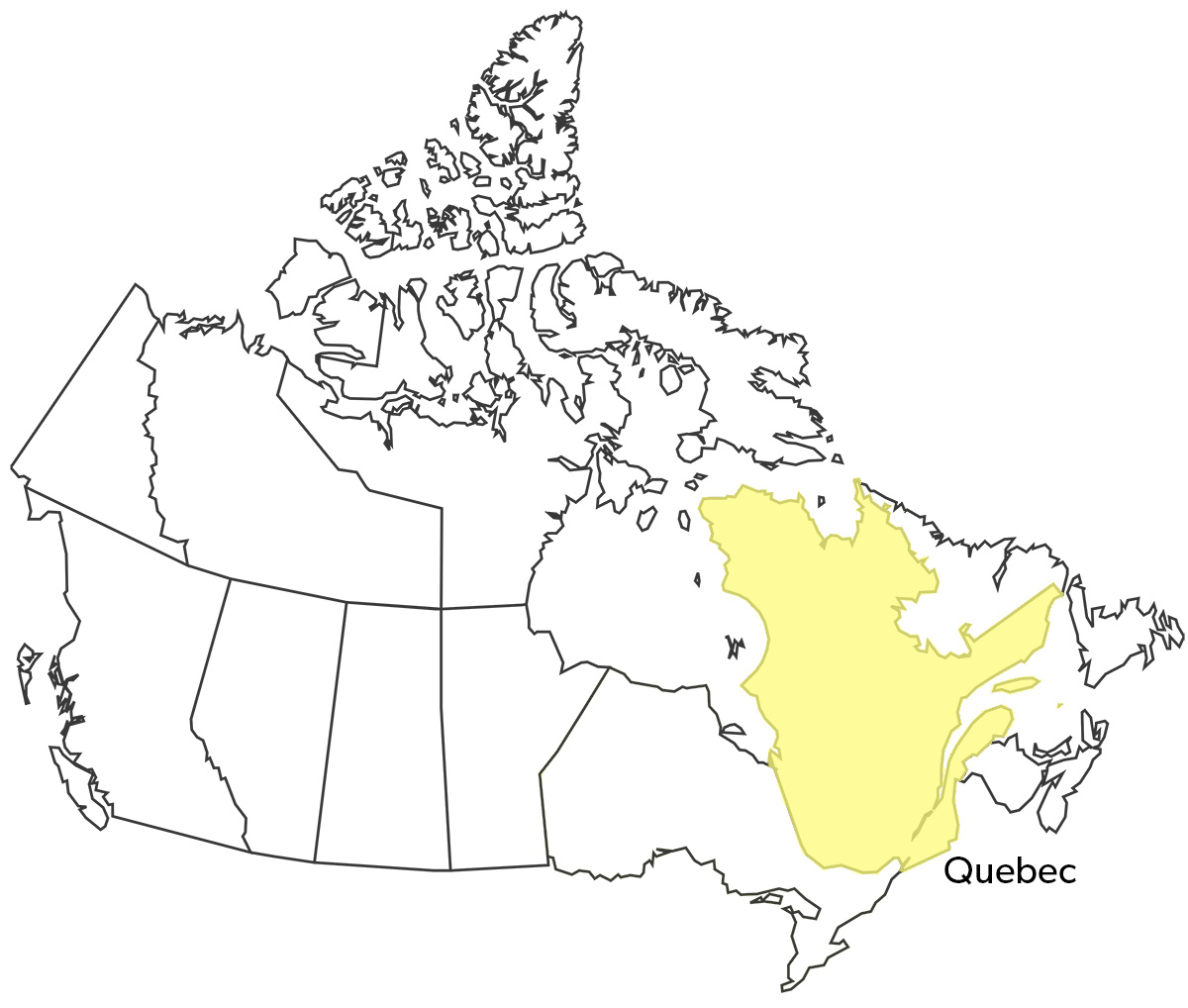
The economy of Quebec is very big. It makes up about 20 per cent of Canada’s GDP. The province’s economy used to be bigger. It became smaller because of the completion of the St. Lawrence Seaway. Politics and development in other regions also affected Quebec’s economy. The economy began growing again in the 2000s. There are more jobs now (see Work). Many people work in the tech industry (see Technology in Canada). Businesses have grown too.
Ontario

Ontario has the biggest economy in Canada. It makes up about 38 per cent of Canada’s GDP. It has a big manufacturing industry. Manufacturing includes auto-making and the food and beverage industry. Ontario used to have a bigger manufacturing industry. The service sector is the biggest part of the economy now. One reason why the economy of Ontario is so big is because of its geography. It is in a central location. It is close to the United States and to lakes and rivers (see International Trade). So, transportation of goods is simple. The city of Toronto is also an important financial centre.
Western Canada

Western Canada is made up of four provinces. They are Manitoba, Saskatchewan, Alberta and British Columbia. The economy of Western Canada is almost as big as the economy of Ontario. The West has grown very quickly. The primary reason for this growth is that the West has many resources. Alberta has a lot of oil. Saskatchewan has uranium, potash, oil and excellent farmland (see Agriculture in Canada). British Columbia has a lot of natural resources too. It also has a booming real estate sector. In addition to this, it is also a center of shipping. The ports in Vancouver are important in the trade between Canada and Asia.
Northern Canada

The North is very important to the economy. Northern Canada is made up of the Yukon, the Northwest Territories and Nunavut. The North has many natural resources. The mining industry plays a big role in the Northern economy. The economy can become much bigger if there is more international shipping and more resources are found. It is believed that it has a lot more mineral wealth and oil.
The Wealth Gap
There is a big wealth gap between the regions. The term “wealth gap” means that some people have much more wealth than others. People in Atlantic Canada make less money on average than elsewhere in Canada. People in Quebec make less money on average as well. The population of Ontario has traditionally been the richest in Canada. Those in Western Canada experience much instability. The wealth of Western Canada is dependent on the prices of resources. If prices rise, so does the wealth of Western Canadians. If prices decrease, the same is true.
The Future
Each Canadian region has a different economy. And each economy produces a different amount of wealth. This will no doubt be true in the near future too. Although each region is different, they are dependent on each other. The Canadian economy, like its society, is diverse and unified at the same time.

 Share on Facebook
Share on Facebook Share on X
Share on X Share by Email
Share by Email Share on Google Classroom
Share on Google Classroom





